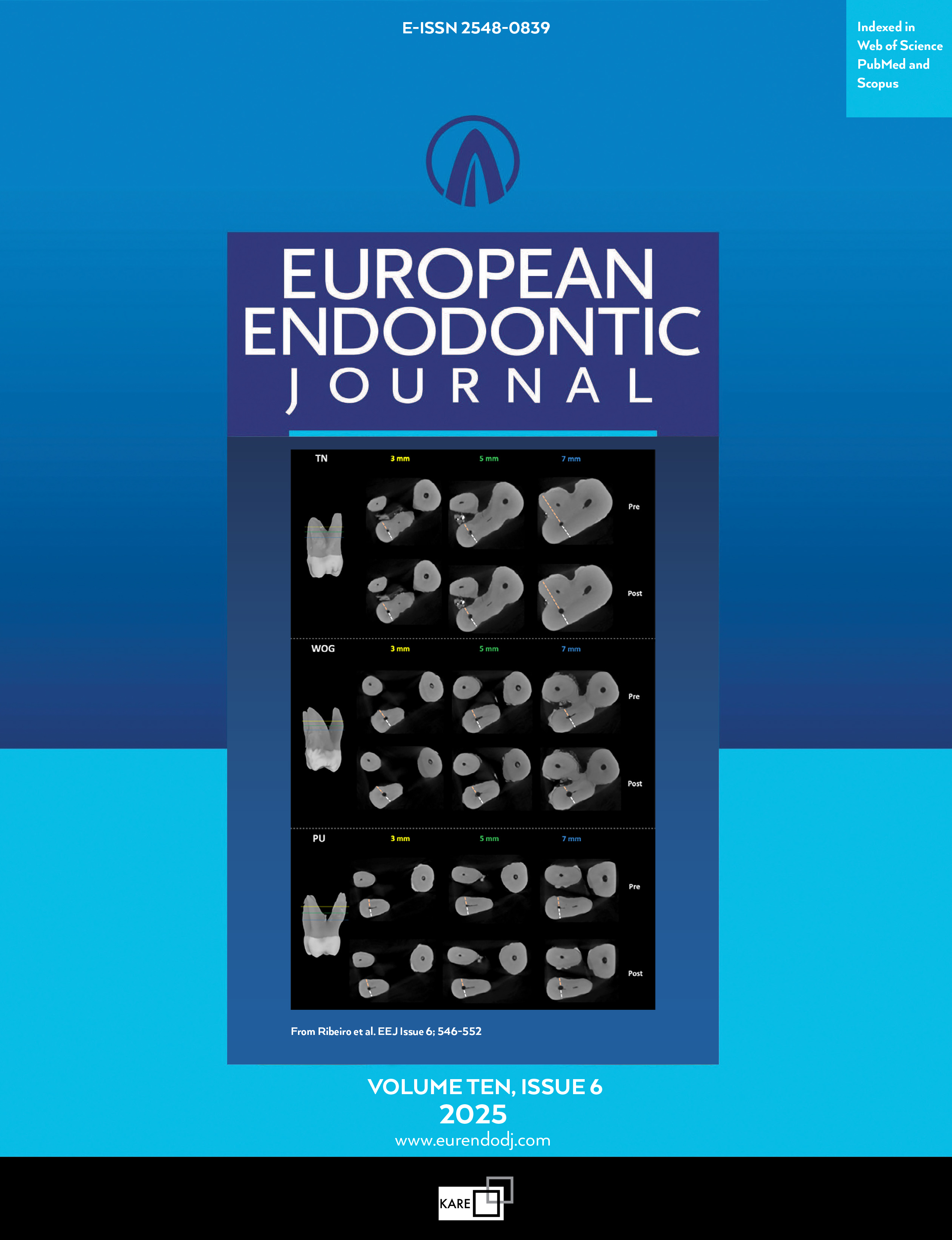Metrics
2024 IMPACT FACTOR
5 year Impact Factor
Eigenfactor Score
2024 CiteScore
Journal Citation Reports
(Clarivate 2025, JIF Rank)
Accuracy of Working Length Measurement Using Cone Beam Computed Tomography at Three Field of View Settings, Conventional Radiography, and Electronic Apex Locator: An Ex-vivo Study
Arash Izadi, Faezeh Golmakani, Ezatolah Kazeminejad, Amin Mahdavi AslDental Research Center, Golestan University of Medical Sciences, Gorgan, IranObjective: Determining the working length (WL) in root canal treatment facilitates the treatment prognosis. The introduction of apex locators and new devices in dentistry influenced this consideration. This compar-ative study evaluated the accuracy of working length measurement by cone beam computed tomography (CBCT) in three fields of view (FOVs), conventional radiography, and the apex locator Raypex 5.
Methods: The descriptive-analytical study was performed on 40 mandibular premolar teeth that met the inclusion criteria. Direct observation under the microscope was considered the gold standard and compared with measurements by the electronic apex locator, CBCT at three field of view settings and periapical images. The results were analyzed by paired t-tests and Wilcoxon tests. The level of significance was set at 0.05 (p=0.05).
Results: Results showed that the CBCT at 5×5 FOV (p=0.733) and Conventional radiography(p=0.001) achieved the working lengths with the highest and lowest accuracy, respectively. In addition, the difference between actual and measured working length using conventional radiography was significant (p<0.05).
Conclusion: According to the results of this study, CBCT images at different FOVs and those taken by the apex locator Raypex 5 can be used as a reliable method for estimating the working length.
Keywords: Apex locator, cone-beam computed tomography, conventional radiography, field of view, working length
Manuscript Language: English
(515 downloaded)


